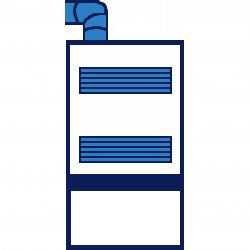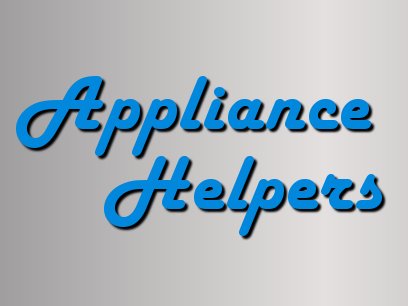Appliance Types
- Air Conditioner
- Automobile
- Chainsaw
- Circular Saw
- Dishwasher
- Drills
- Dryer
- Drywall Screw Gun
- Furnace
- Gas Fireplace
- Gas Grill
- Gas Patio Heater
- Grinder
- Heat Pump
- Impact Driver
- Impact Wrench
- Microwave
- Nailer
- Orbital Sander
- Pool Heaters
- Powerwall
- Range
- Refrigerator
- Television
- Washer
- Water Heater
Appliance Brands
- A.O. Smith
- AccuCold
- Admiral Craft
- AGA
- Airrex
- Amana
- Ambiance
- American Range
- American Standard
- American Water Heaters
- Aquacal
- Armstrong
- Asko
- Avanti
- Avenlur
- Azure
- Beko
- Bellfires
- Bertazzoni
- Blackstone
- Blaze
- Blomberg
- BlueStar
- Bosch
- Bradford White
- Bromic
- Bryant
- Cafe
- Calcana
- Capital
- Carrier
- Char-Broil
- Char-Griller
- Chrysler
- Coates
- Coleman
- Comfortmaker
- Commercial Chef
- Continental
- Cosmo
- Cove
- Crown Verity
- Dacor
- Daikin
- Danby
- Danfoss
- DaVinci
- DCS
- Deco
- DeWALT
- Ducane
- Dyna-Glo
- Dyson
- EcoSmart
- Electrolux
- Element4
- Empava
- Equator
- Eurodib
- European Home
- Everdure
- Farberware
- Fhiaba
- FibroPool
- Fire Sense
- Fisher
- FiveStar
- Flare
- Flash Furniture
- Focus
- Ford
- Forno
- Forte
- Frigidaire
- Fulgor Milano
- Gaggenau
- GE
- General Motors
- GlowBrand
- Goodman
- Grundig
- GSW
- Haier
- Hayward
- Heatstar
- Heil
- Hestan
- Hisense
- Hitachi
- Hotpoint
- iio
- Ilve
- Impecca
- Ingignia
- Insignia
- JennAir
- John Wood
- Keeprite
- Kenmore
- Kenyon
- KitchenAid
- Kucht
- La Cornue
- Lennox
- LG
- Liebherr
- Lifetime
- Lion
- Luxaire
- Lynx
- Magic Chef
- Marvel
- Maytag
- McQuay
- MicroFridge
- Midea
- Miele
- Migali
- Monogram
- Montigo
- Mr Heater
- Napoleon
- Navien
- Nexgrill
- Noritz
- Panasonic
- Patio Comforts
- Payne
- Pentair
- Perlick
- PITT
- Premier
- Raypak
- Real Fyre
- Regency
- Reliance
- Rheem
- Rinnai
- Roma
- Ruud
- Saber
- Samsung
- Schwank
- Sharp
- Smeg
- Solas
- Sony
- Spartherm
- Speed Queen
- StaRite
- State Water Heaters
- Stiebel Eltron
- SubZero
- Summerset
- Summit
- SunGlo
- SunPak
- Sunpentown
- SunStar
- Superiore
- Takagi
- TCL
- TEC
- Tempstar
- Tesla
- Thermador
- Thor Kitchen
- Toshiba
- Town and Country
- Toyota
- Traeger
- Trane
- Twin Eagles
- U-Line
- Unique
- Vaillant Group
- Valor
- Verona
- Victory
- Viessmann
- Viking
- Vizio
- Weber
- Westinghouse
- Whirlpool
- Whynter
- York
- ZLINE
Article Categories
- Air Conditioners
- Appliance Care
- Appliance News
- Dishwasher News
- Drying Machines
- Furnaces
- Gas Fireplaces
- Microwaves
- Pool Heaters
- Refrigerators
- Stoves - Ranges
- Tips and Tricks
- Washing Machines
- Water Heaters
More Articles

Furnace Repair
A furnace, referred to as a heater or boiler in British English, is a heating unit used to heat up an entire building. Furnaces are mostly used as a major component of a central heating system. Furnaces are permanently installed to provide heat to an interior space through intermediary fluid movement, which may be air, steam, or hot water.
Check Your Thermostat to make sure it's ON.
Step 1: Check the battery on the thermostat. You may need to change the batteries on your thermostat. If your home's thermostat unit runs on batteries, be sure you are changing them at least once a year, or as needed.
Step 2: Open the thermostat and gently blow any dust or debris that may have clogged it.
Step 3: Make sure the date and time is correct on electronic or programmable models - the system may be on a timer.
Step 4: Check the breaker. If on, turn off the breaker and check the fuse for the furnace.
Furnace is Not Producing Heat - Try to Reset Home Circuit Breaker.
Go to your home's breaker panel and look for the circuit that controls the furnace. You're looking to see whether it's thrown to the Off position, or whether it's in the middle.
1. Manually test the breaker. Flip it back and forth.
2. Make sure it is staying in the "On" position.
Furnace is Not Producing Enough Heat - Check and Change Your Clogged Filter.
1. Locate your filter - Some furnaces have their filter in the intake. This most likely looks like a grate in a floor, ceiling or wall. Other filters reside in the furnace itself.
2. Check your filter - You can tell if the time has come to change it by holding it up to the light. If no light shines through, the filter needs changing. A dusty, dirty smell from the vents when the blower turns on is another good sign you should change your furnace filter.
3. Replace your filter - Make sure your furnace is turned off. No air should be coming out. Check the direction your filter points. Filters are made to trap matter blown from one direction. Installing your filter upside-down can reduce its effectiveness.
Safety Switch on Furnace Door.
Furnaces have a safety switch that pops out when the door is removed. The door must be in place for the switch to be activated and for the furnace to operate.
If you discover you need to install a new safety switch, follow the step by step instructions on "How to Install a Furnace Door Safety Switch."
Step 1: Shut the power off.
Step 2: Prep the blower door.
Step 3: Wire the safety switch.
Step 4: Check and test the installation.
Look at the Burner Flames.
You want to make sure your burners are clean and one way to do this is to look at the flames.
Are they blue and even?
Then your burner is likely clean. If they are yellow, you probably have dirty burners. You can clean your burners with a vacuum cleaner; just make sure to turn the power and the gas off first. Another area you should clean with a vacuum cleaner is the region around the blower.
Dust can accumulate during the summer. Therefore, it's very important to check and clean the furnace burners before the start of the colder seasons.
A combination of condensation and soot can cause burners to function improperly, and may cause other furnace problems as well. The burner assembly should be cleaned annually or replaced if the existing one is in poor condition.
Source: https://www.centralhtg.com/blog/furnace-repair




